
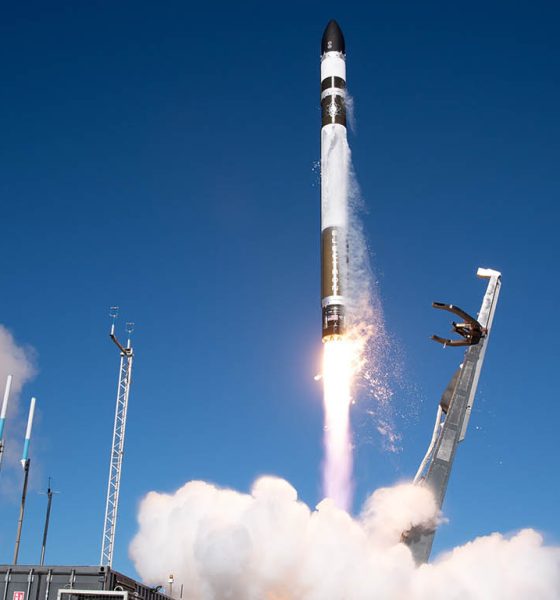
News
Rocket Lab’s tiny Electron rocket set for fifth New Zealand launch this year
Nicknamed “In Focus,” the fifteenth overall launch of Rocket Lab’s Electron rocket is set to liftoff on Wednesday, October 21 from Launch Complex 1 on New Zealand’s Mahia Peninsula. Electron’s next rideshare mission will deploy ten satellites to a circular 500km Sun-Synchronous Orbit (SSO).
The “In Focus” mission nickname is a nod to the rideshare payload of ten Earth-imaging satellites for multiple customers. Onboard Electron is nine SuperDove satellites for Earth-imaging service provider Planet and a Earth-image microsatellite for Canon Electronics Inc. procured by mission management provider Spaceflight Inc.
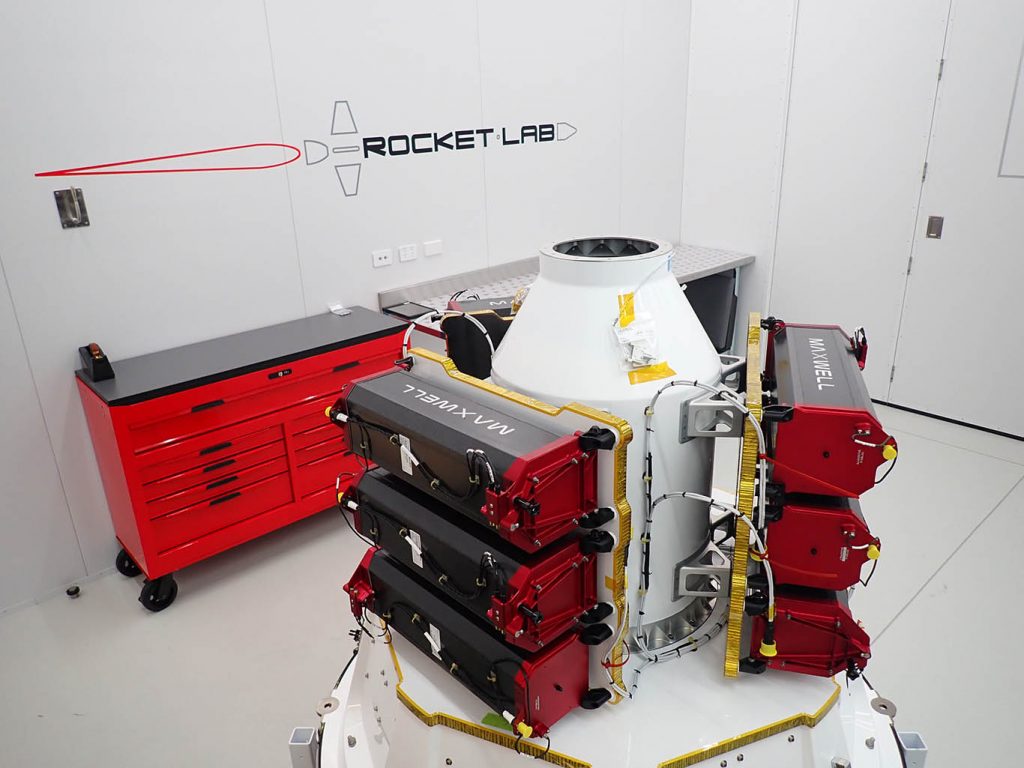
Nine more SuperDoves join the flock
The nine Flock 4e SuperDove satellites will join Planet’s constellation of satellites already in orbit to continue to provide medium-resolution global coverage earth-imaging services. The latest generation batch of satellites is slated to launch after a previous payload of five was lost when the thirteenth launch of Rocket Lab’s Electron failed during second-stage flight. The satellites were destroyed during re-entry after the Electron’s Kick Stage failed to ignite and propel the payload to the intended orbit.

Planet is the operator of the world’s current largest constellation of Earth-imaging satellites. According to Planet, imaging data provided by near-daily global observations “enables researchers, students, businesses and governments to discover patterns, detect early signals of change, and make timely, informed decisions.”
Readily available satellite imagery data provided by the largest Earth-imaging constellation enables rapid response in the instance of catastrophic widespread events such forest fires, explosions, and even oil spills. Planet makes the regularly updated disaster imagery data available to various registered organizations through an online imagery browser, Planet Explorer.
Satellite imagery data can also be used to monitor development. The construction progress of Elon Musk’s Tesla Gigafactory Berlin located in Germany has been seen from above by Planet’s Skysat. The progress of the production facility is evidenced by the addition of infrastructure and building foundations from April to August of 2020.
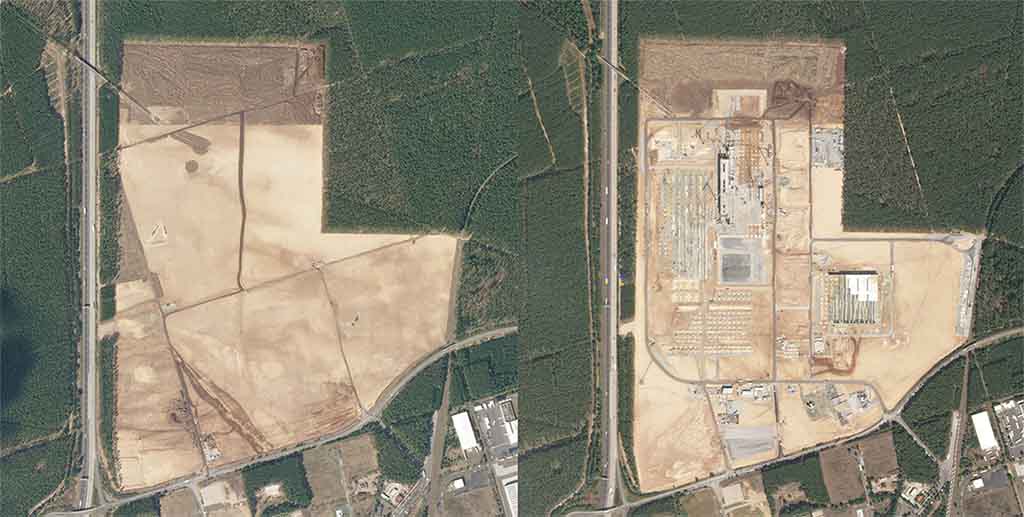
Microsatellite features cameras with major punch
Canon Electronics Inc.’s CE-SAT-IIB technical demonstration microsatellite is equipped with a mid-sized telescope outfitted with three kinds of highly sensitive cameras. The satellite will demonstrate the capabilities of the Cassegrain reflectors and ability to take images of the Earth, even at night, with Canon’s mirrorless and compact digital cameras. The demonstration is designed to last 2 years.
The CE-SAT-IIB satellite is Canon Electronics Inc.’s third Earth-imaging microsatellite. The first, CE-SAT-1, was launched aboard a Polar Satellite Launch Vehicle in 2017 by the Indian Space Research Organisation. The second satellite, CE-SAT-IB was unfortunately lost during the same Rocket Lab mission failure that resulted in the loss of the five Planet SuperDove satellites.
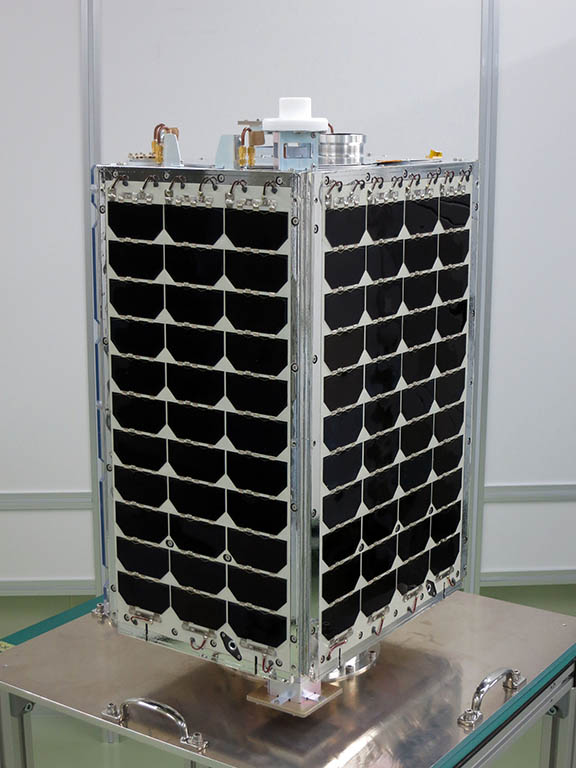
Rocket Lab will broadcast a hosted webcast of Electron’s fifteenth mission from New Zealand on Wednesday, October 21 about fifteen minutes before the nearly hour-long launch window extending from 5:14-6:03 p.m. EDT (2114-2203 UTC). Should the launch attempt be delayed Rocket Lab has back up launch opportunities daily until Tuesday, November 3.

Elon Musk
Elon Musk’s Biggest Revelations on AI, Robots, and the Future of Work from the Moonshots Podcast

Elon Musk’s appearance on the Moonshots with Peter Diamandis podcast was packed with bold predictions, candid admissions, and surprising tech insights. The nearly three-hour conversation covered everything from artificial intelligence to humanoid robots, geopolitics, and the future of work. Here are the top 10 most intriguing takeaways:
-
Aggressive AGI Timeline Predictions
Musk offered a detailed view on when artificial general intelligence (AGI) could emerge, suggesting it may arrive sooner than many expect, emphasizing both transformative potential and risks.
-
U.S. vs. China in the AI Race
He discussed the strategic competition between the United States and China over AI development, noting that geopolitical dynamics will shape how and who leads in the next decades.
-
Future of Job Markets
Musk touched on how AI and automation could reshape employment, predicting massive boosts in productivity alongside potential disruptions in traditional work structures.
-
Clean Energy Transition
A recurring theme was the role of clean energy in future economies, with Musk reiterating the importance of scaling sustainable power generation and storage.
-
Humanoid Robots Are Coming
On the podcast, Musk elaborated on Tesla’s work on humanoid robots, hinting at timelines and applications that go beyond factories to general-purpose assistance.
-
Tesla Roadster “Last Human-Driven Car”
Outside the core discussion topics, Musk teased features of the upcoming Tesla Roadster — calling it “the best of the last of the human-driven cars” and suggesting safety won’t be its main selling point.
-
The Role of AI in Clean Energy and Robotics
Linking AI to both energy optimization and robotics, Musk explained how smarter systems could accelerate decarbonization and task automation across industries.
-
U.S. Innovation Leadership
Musk argued that maintaining American leadership in key tech sectors like AI, space, and robotics should be a national priority, with thoughtful policy and investment.
-
Job Creation vs. Job Elimination
While acknowledging automation’s disruptive effects, he also outlined scenarios where new industries and opportunities could emerge, particularly in AI, space, and advanced manufacturing.
-
Long-Term Vision for Humanity
Throughout the conversation, Musk revisited his long-term philosophical views — including a belief in humanity’s responsibility to become a multi-planetary and technologically empowered species.
Whether you agree with Musk’s optimism or not, the podcast offers a window into the thinking of one of the most influential figures in tech today, in and why his visions continue to spark debate and inspiration.
Elon Musk
Elon Musk just said some crazy stuff about the Tesla Roadster
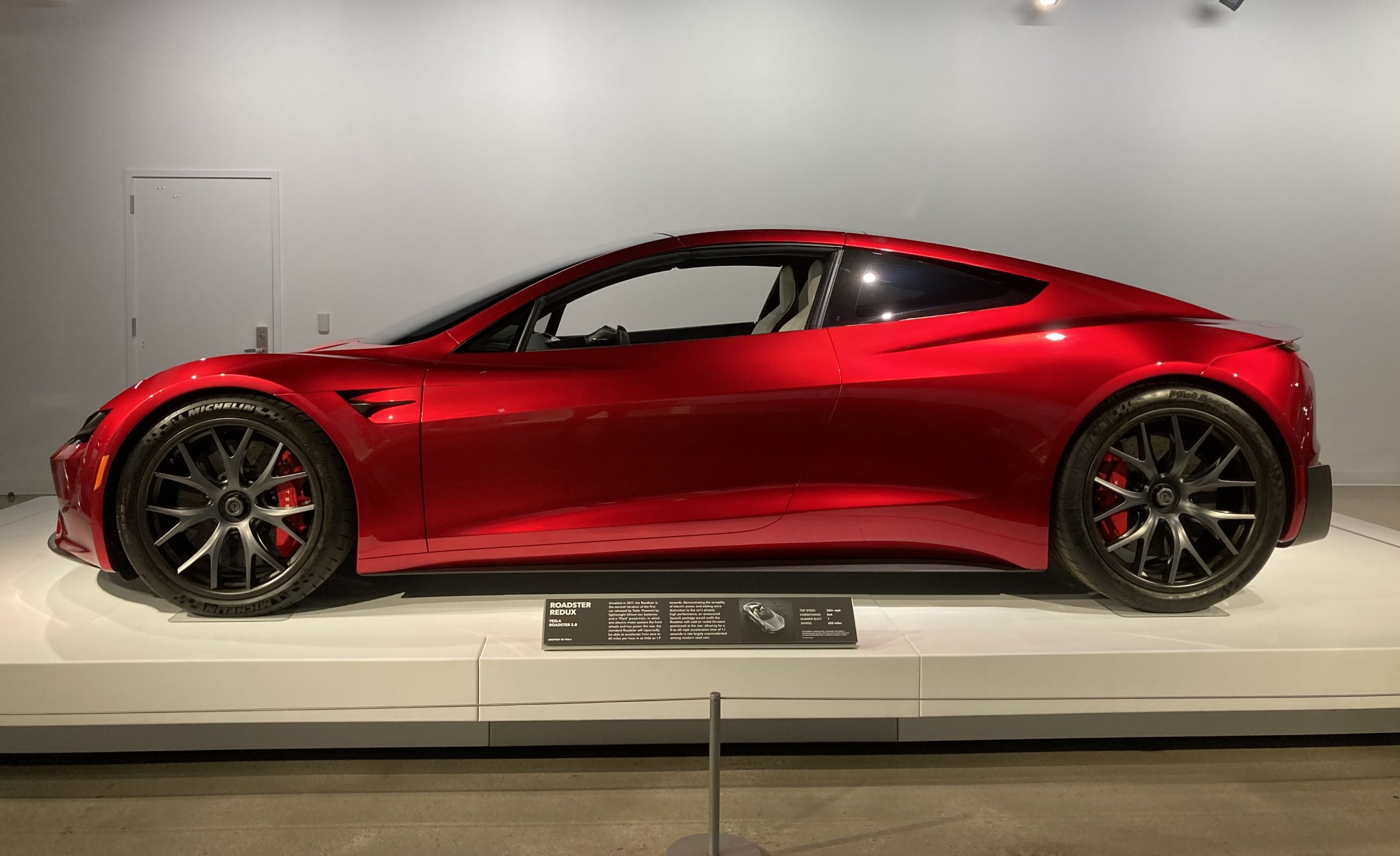
Elon Musk appeared on the Moonshots podcast with Peter Diamandis today to discuss AGI, U.S. vs. China, Tesla, and some other interesting topics, but there was some discussion about the upcoming unveiling of the Roadster, the company’s electric supercar that will arrive several years after it was initially slated for release.
Musk made some pretty amazing claims about the Roadster; we already know it is supposed to be lightning-fast and could even hover, if Tesla gets everything to happen the way it wants to. However, the car has some pretty crazy capabilities, some of which have not even been revealed.
On the podcast, Musk said:
“This is not a…safety is not the main goal. If you buy a Ferrari, safety is not the number one goal. I say, if safety is your number one goal, do not buy the Roadster…We’ll aspire not to kill anyone in this car. It’ll be the best of the last of the human-driven cars. The best of the last.”
🚨 Elon on the Roadster unveiling, scheduled for April 1:
— TESLARATI (@Teslarati) January 6, 2026
Musk makes a good point: people who buy expensive sports cars with ridiculous top speeds and acceleration rates do not buy them to be safe. They hope they are safe in case of an emergency or crash, but safety is not at the forefront of their thoughts, because nobody buys a car thinking they’ll crash it.
The Roadster is truly going to push the limits and capabilities of passenger vehicles; there’s no doubt about that. Tesla plans to show off the new version car for the first time on April 1, and Musk has only hinted at what is possible with it.
Musk said back in November:
“Whether it’s good or bad, it will be unforgettable. My friend Peter Thiel once reflected that the future was supposed to have flying cars, but we don’t have flying cars. I think if Peter wants a flying car, he should be able to buy one…I think it has a shot at being the most memorable product unveiling ever. [It will be unveiled] hopefully before the end of the year. You know, we need to make sure that it works. This is some crazy technology in this car. Let’s just put it this way: if you took all the James Bond cars and combined them, it’s crazier than that.”
Production is set to begin between 12 and 18 months after the unveiling, which would put the car out sometime in 2027. Hopefully, Tesla is able to stay on track with the scheduling of the Roadster; many people have been waiting a long time for it.
News
Tesla launches hiring for Robotaxi program in its twentieth country
Overall, the hiring signals Tesla’s aggressive timeline for global dominance in autonomous mobility.

Tesla has launched a hiring initiative for its Robotaxi program in its twentieth country, as the company posted two new jobs in Thailand this week.
Tesla is hiring in Bangkok and Kowloon for the Vehicle Operator position, which is related to data collection, and is the first in Thailand, but the twentieth country overall, as the company tries to expand into other markets.
🚨 BREAKING: Tesla is hiring additional full-time Vehicle Operators in Bangkok, Thailand.
Previous openings were 6-month, part-time roles. These are equivalent to AI Safety Operator roles in the U.S. pic.twitter.com/R6LzoU1bos— Tesla Yoda (@teslayoda) January 5, 2026
Tesla has had active job postings for Vehicle Operator positions in the United States, India, Israel, Taiwan, Germany, the Czech Republic, Hungary, the UK, Finland, Switzerland, Sweden, the Netherlands, Austria, Spain, Norway, Italy, and Turkey in past listings.
These postings are not all currently available, likely because the roles have been filled.
Thailand is the most recent, and broadens the company’s potential path to expanding its ride-hailing program, which is only active in the United States in Austin, Texas, and the California Bay Area, so far.
These roles typically involve data collection, which assists in improving Autopilot and Full Self-Driving operation. Tesla’s self-driving programs utilize real-world data that is accumulated and stored, observing vehicle and traffic behavior, as well as tendencies that are performed by human drivers to help increase safety and overall performance.
Overall, the hiring signals Tesla’s aggressive timeline for global dominance in autonomous mobility. Although the company has several high-profile rivals and competitors in the field, it has established itself as a main player and a leader in the development of autonomous technology, especially in the U.S., as its FSD suite is refined on almost a weekly basis.
The Full Self-Driving suite is available in seven countries and territories currently, including the U.S., Canada, China, Mexico, Puerto Rico, Australia, and New Zealand. Its biggest goal for expansion is currently the European market, where regulatory hurdles have been the main bottleneck prolonging its launch on the continent.
Tesla has performed months of testing in various European countries, including France and Spain, and does have support in some areas from various regulatory agencies. However, the company is hoping to get through this red tape and offer its suite in Europe for the first time, hopefully this year.








